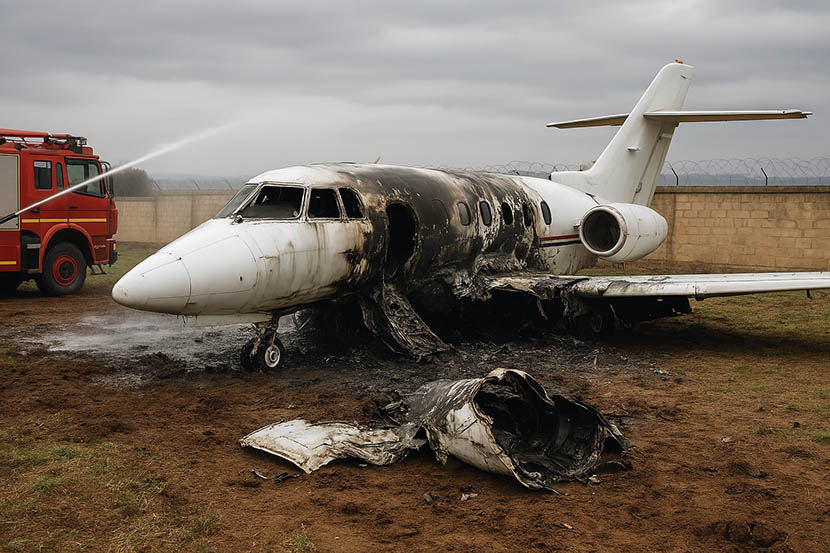A recent crash at Fes Sais International Airport involving a Hawker 800XPi private jet has sparked renewed concerns over aviation safety in North Africa. The aircraft, operated by Air Ocean Maroc, was on a domestic flight from Marrakesh Menara Airport when it veered off the runway during landing and crashed into the airport’s perimeter wall. Despite the jet being completely destroyed, all three crew members miraculously survived with only minor injuries.
The high-profile nature of the aircraft—a model known for executive luxury and strong performance—has intensified attention on the incident. Video footage from the crash site shows smoke rising from the wreckage as emergency services battled the blaze, painting a grim picture that has since gone viral across social media platforms.
While no passengers were aboard, the incident has raised serious questions about the safety of private and charter aviation in the region. It also highlights potential gaps in airport infrastructure, emergency preparedness, and pilot training—especially as private jet usage continues to grow in North Africa.
Fes Sais International Airport, though not the country’s largest, plays a vital role in Morocco’s tourism and private aviation sectors. The crash has turned a spotlight on whether secondary airports are adequately equipped to handle high-end corporate and medical flights. Aviation experts are calling for improved runway maintenance, upgraded navigation systems, and more robust perimeter protections.
Air Ocean Maroc, a known operator offering private jet and air ambulance services, is now under scrutiny. While the company has maintained a strong safety record, this incident has prompted calls for an in-depth review of maintenance procedures, crew readiness, and emergency response systems—not only for Air Ocean Maroc but for all operators in the region.
The growing demand for private jets across Morocco, Tunisia, and Egypt has been driven by business executives, tourists, and high-net-worth individuals seeking convenience and privacy. However, as this market expands, so too must the regulations and infrastructure to support it safely.
Following the crash, Morocco’s Ministry of Transport confirmed the aircraft lost control during landing and struck the perimeter barrier. Investigations are underway, with expectations that international aviation bodies such as ICAO and IATA may also assist in evaluating the incident. The findings could lead to tighter oversight of charter operations and potentially new policies regarding runway safety and aircraft operation standards.
For Morocco, whose economy relies heavily on tourism and business travel, the implications are significant. The crash may lead to increased insurance premiums for charter operators, stricter client vetting processes, and a temporary dip in confidence among luxury travelers. Travel advisors and tour companies may demand more rigorous proof of safety compliance before partnering with private aviation services.
This event has also sparked discussions around integrating modern aviation technologies—such as AI-assisted landings and real-time hazard detection—to reduce future risks. Private jet clients are increasingly prioritizing not just comfort but proven safety standards, pushing operators to raise the bar on operational transparency and readiness.
In conclusion, while the survival of the crew and the quick response from emergency services offer some relief, the Fes Sais crash serves as a wake-up call. If North Africa is to support a thriving private aviation sector, systemic improvements in safety protocols, infrastructure, and operator accountability are urgently needed.

